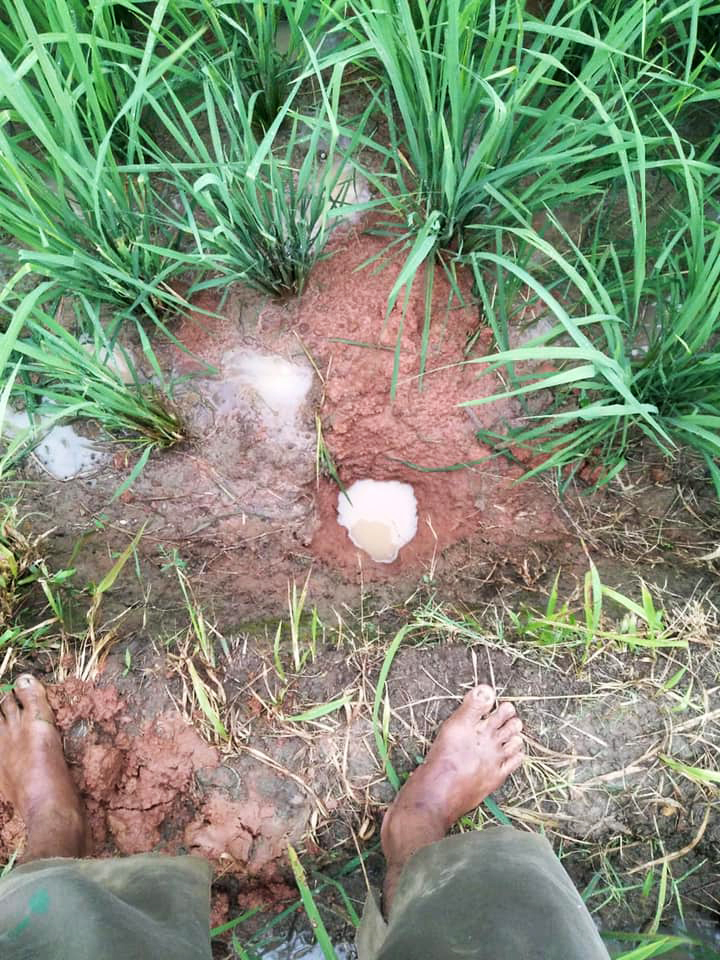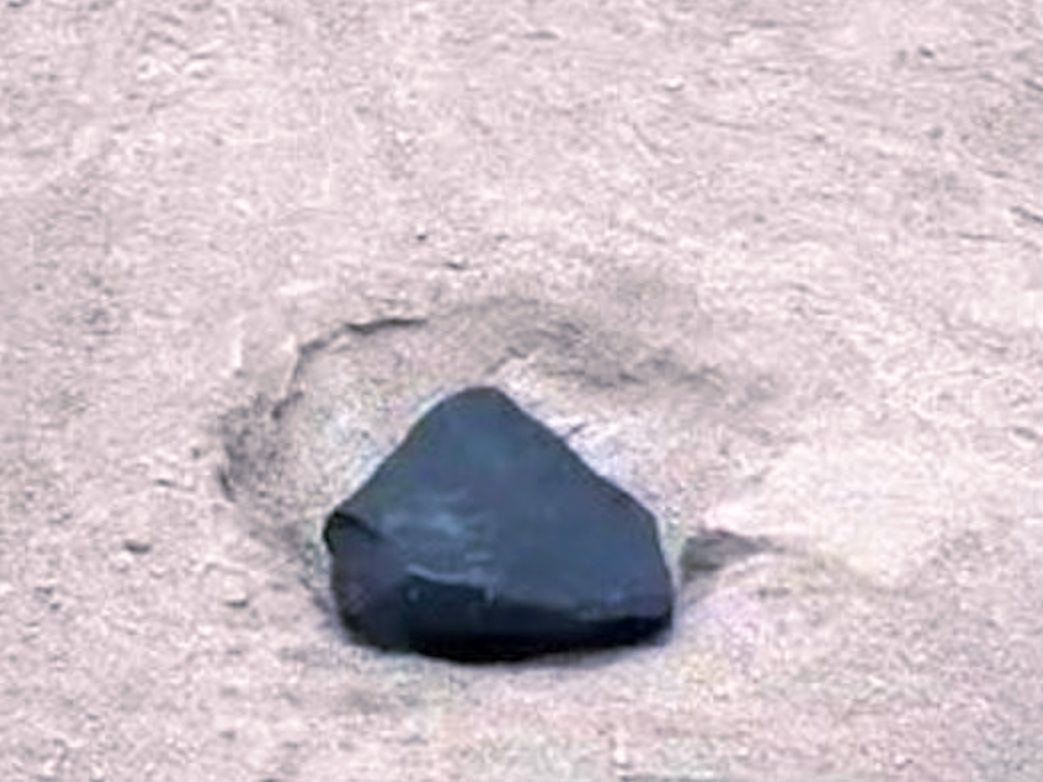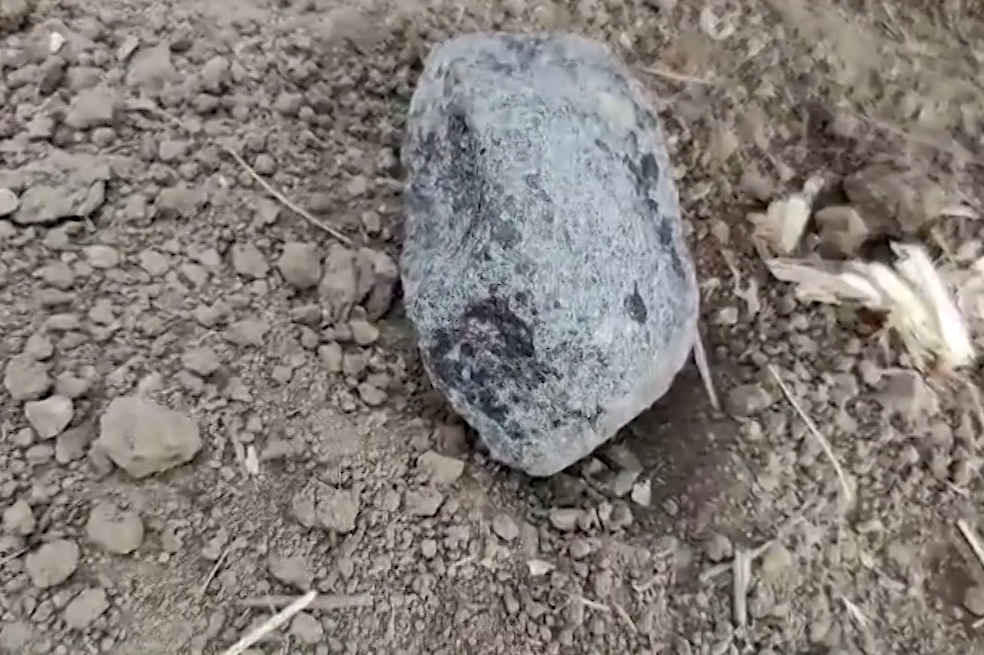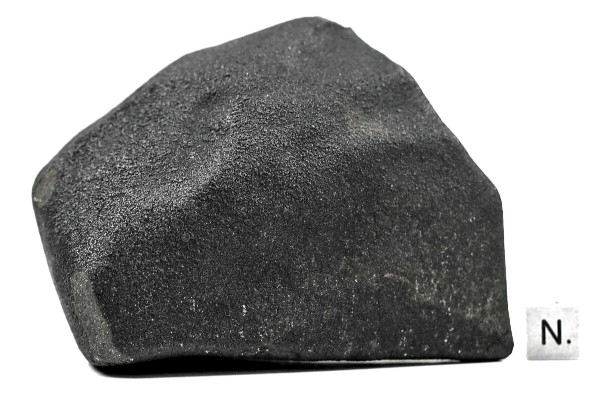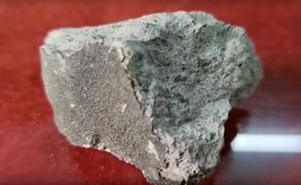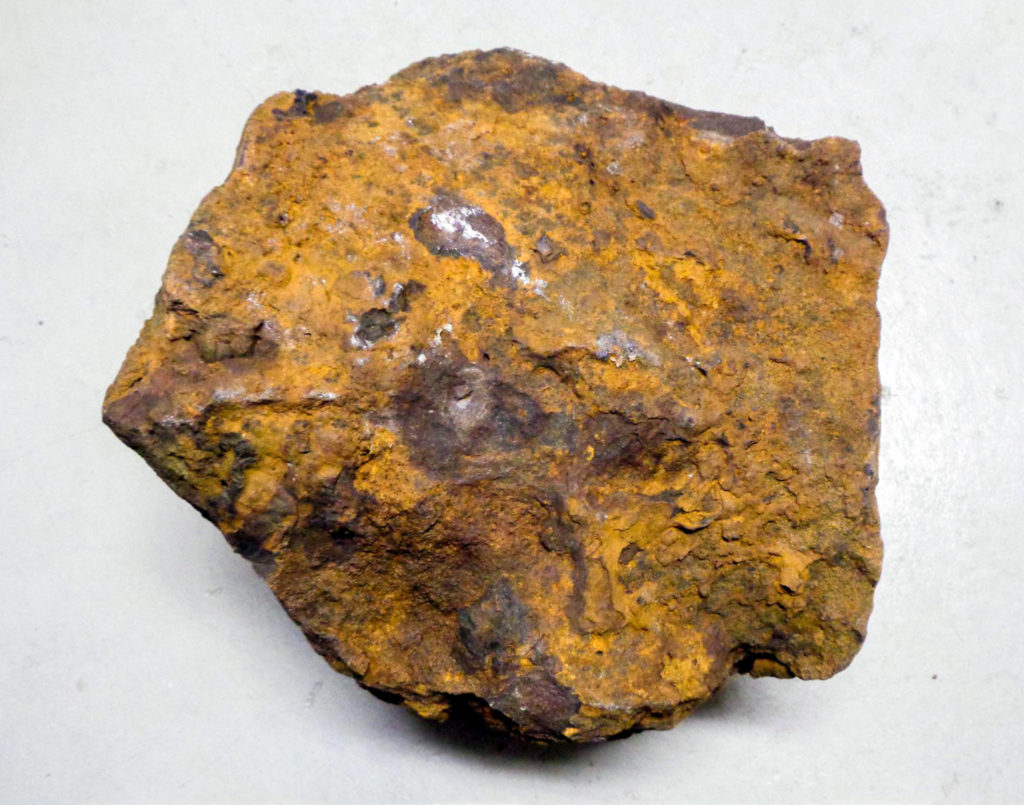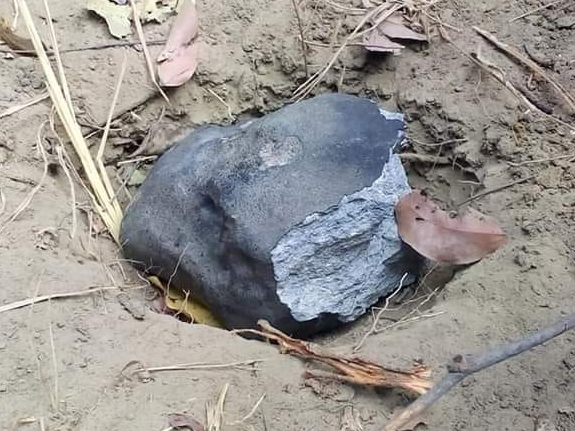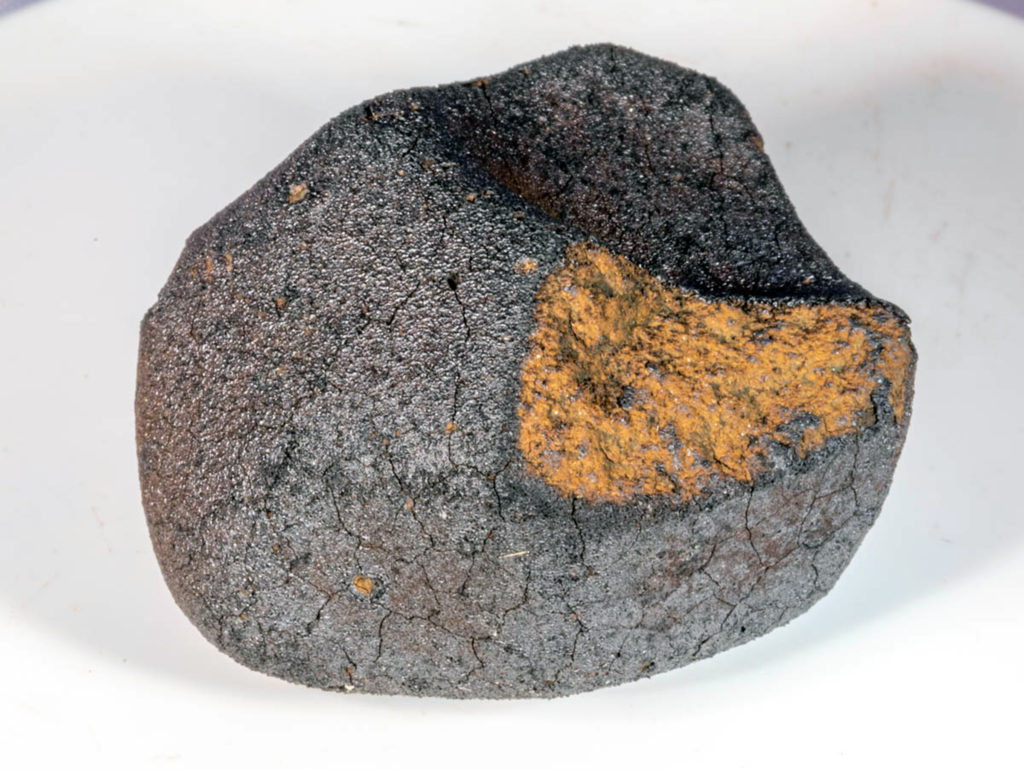Punggur
PUNGUR – meteorite fall (H7-melt breccia, 6599 grams, in Mojopahit and Astomulyo (Punggur district) and Gunung Sugih, Central Lampung, Sumatra, Indonesia on 28 January 2021 shortly before 21:53:07 WIB (14:53:07 UTC)
Last update: 23 April 2021
Bolide and strewn field

The exact find locations of the currently known five masses. The distance between the find locations of the 50-gram and the 2200-gram mass is 5497 meters, the distance between the 138.3-gramm mass and the 2200-gram mass is 2819 meters. The bolide seems to have come from a western to northwestern direction. Eyewitnesses from Central Lampung reported about a bolide with a subsequent dust cloud which was persistent for several dozen minutes. The bolide’s detonation was apparently also recorded by three southwestern Lampung province sensors (UTSI, KASI, PSSM) of the Indonesia Tsunami Early Warning System (InaTEWS) which by managed by the BMKG (Badan Meteorologi Klimatologi dan Geofisika) At ~14:53:07 UT the sensor UTSI recorded the signal first, then followed by KASI which recorded an ~8-second signal from ~14:53:56 to ~14:54:04 UT. From ~14:54:44 UT the signal was also recorded by the PSSM sensor. Thus the sensors received a signal coming from a northeastern direction. On 23 April 2021 the fall was officially registered in the Meteoritical Bulletin database as confirmed fall Pungur (H7-melt breccia). Image: karmaka
The first mass (~2200 g, found on 28 January 2021)

The mass after it was soaked in water. Photo: ITERA
On Thursday, 28 January, shortly before 21:53:07 WIB (14:53:07 UTC) a 25-centimeter long mass (~2.2 kg) fell at location 5°00’22.4″S, 105°16’11.9″E through the protruding roof of 60-year old Mujilah’s house in Dusun 5 (Mulyodadi) of Astomulyo, Punggur, Central Lampung, Sumatra. At around 9 p.m. Mujilah returned home to join her husband Muhtajam (68). Some time later they heard rumbling noises and three loud bangs outside. Initially Mujilah thought it was an exploding tire of a car. Then she heard a bang outside, at the backside of their house. The couple went outside immediately and found a rock at the foot of the impacted outer kitchen wall. Later the mass was put into an aquarium filled with water because the locals assumed the meteorite would transpire some substances into the water which would make it contain some kind of ‘healing power’. The water was then filled into small plastic bags and handed out to the local population. This very unfortunate procedure resulted in a considerable corrosion of the iron on the meteorite’s surface. After that a sample of about 400 grams was cut off the mass by researchers from the Sumatra Technology Institute (ITERA) who already at the fall site confirmed that the mass was an authentic meteorite. On 16 February ITERA reconfirmed the meteoritic nature of the mass in an article on their website. The story of the 2200-gram mass has been widely published in Indonesian media. In March 2021 the 2.2-kilogram mass was sold and exported. The meteorite has been classified by Dr. Laurence Garvie at the Arizona State University.
The fall location
An early recording from the night of the fall. Video: Capung Hunter Koclok
An early recording from the night of the fall. Video: unknown
The second mass (138.3 g, found on 29 January 2021)

The 138.3-gram mass next to the hole in the bed sheets it is reported to have caused. Image: ibaf fabi
Another 138.3-gram wedge-shaped mass is reported to have fallen at location 4°59’46.6″S, 105°14’47.6″E through the roof of Soleh (45) and his wife Satinem’s (40) house in Mojopahit, Punggur, Central Lampung, Sumatra. In the evening of 28 February Satinem was alone at home, because her husband and her child were not at home. She had just stopped watching TV and heard a crackling sound (‘Kresek-kresek’ then ‘duaaar ngono’) outside at about 10 p.m.. She looked for a potential cause of the sound around the house but could not find anything. In the morning of 29 January at around 7 a.m. she saw the hole in the roof and found roof tile fragments on their child’s bed . When she removed the fragments of the roof tiles from the bed she found the 138.3-gram mass, which had apparently caused (maybe even melted) a hole in the thin ‘Disneyland Castle’ polyester bed sheets and had bounced into a floor tile. She was wondering if this was a bad sign since her husband is a truck driver and she was worried for him. Then she remembered the meteorite story reported from Astomulyo and informed the local authorities. She agreed on having the specimen examined by ITERA researchers. She said she was willing to sell the specimen if it had a price to enable her to pay for debts and go on a pilgrimage (Umrah).

Satinem’s 138.3-gram specimen. Photo: Elang Erlangga
Satinem describing the ‘shiny’ look of her specimen. Video by Satinem, provided by Elang Erlangga
The fall location

The impacted roof in Mojopahit. Image: ibaf fabi

Impacted roof in Mojopahit. Image: ibaf fabi
The third mass (~1700 g, found on 29 January 2021)
A third specimen was found at around 6 a.m. in the morning of 29 January at location 4°59’56.2254″S 105°15’23.3518″E by 70-year old Mbah Sukirno from Dusun 8 Astomulyo, Punggur District, Central Lampung. According to the finder he was applying pesticides and fertiliser to his rice plants when he noticed a flooded opening with a diameter of about 60 to 80 centimeters between the rice plants. When he reached into the flooded hole in the centre of the opening he grabbed a 1.7-kilogram mass at a depth of about 40 centimeters and took it home. Later a sample of about 400 grams was cut off the mass by researchers from the Sumatra Technology Institute (ITERA), 218 grams of this were later returned to the owner. Not knowing what to do or where to store the two fragments of his find he soon decided to sell them and eventually did so. The two sold masses weigh 1,304 and 218 grams. Sukirno had registered himself for a pilgrimage and with the money received for the meteorite he wants to pay for the costs of him and his wife going on this pilgrimage.

The intact 1700-gram meteorite which was found in a rice field by Mbah Sukirno. Photo: unknown

The 1.3-kilogram mass of the cut 1700-gram mass reveals visual similarities to Portales Valley (H6). Photo: ANTV (5 February 2021)
The large remaining mass of the 1.7-kg specimen. Video: Elang Erlangga

The ‘bubbly’ fusion crust on the 1304-gram mass of the 1.7-kg specimen. Photo: Elang Erlangga
The fall location

The fall site of the 1700-gram mass in a rice field. Photo provided by Elang Erlangga
The fourth mass (2511 g, found on 29 January 2021)
The 2511-gram mass was found by Mr. Sudarsono at location 4°59’50.3722″ S, 105°15’13.7405″ E in a pit with a depth of about 70 centimeters while working near the edge of his rice field in Dusun 9 of Astomulyo, Punggur District on 29 January 2021. The find was made public after a few days.
Presenting the intact 2511-gram mass. Video provided by Elang Erlangga

The intact 2511-gram mass. Photo: Hasan Basri

The intact 2511-gram mass. Photo: Josua Hutagalung

Broad elevated metal veins or patches shining through the fusion crust of the 2511-gram mass. Photo: Elang Erlangga
The fall location
The fifth mass (32.05 g, found on 28 January 2021)
The 32.05-gram specimen was found by Mrs Musarofah at location 5°0’35.1518″S 105°13’13.9019″E in Gunung Sugih village in the sub-district Gunung Sugih in the night of the fall. It fell on a roof and bounced off it without breaking it. The finder initially thought somebody had thrown a stone from the road.

The 50-gram mass found in Gunung Sugih. Photo provided by Elang Erlangga
We would like to thank Elang Erlangga very much for providing valuable information and documentary material which have improved the quality of this article substantially.



















